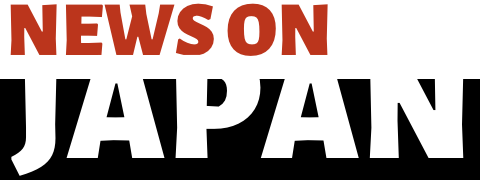Aug 01 (News On Japan) - "I think this is the biggest deal ever," said U.S. President Donald Trump excitedly in front of reporters.
Just before the "final hour" arrived, the United States and the European Union signed a new tariff agreement, narrowly avoiding a trade war. The U.S. had previously warned that if no deal was reached by August 1, it would impose at least a 30% tariff on EU goods. This could reduce the EU’s GDP growth by about 0.4%, pushing the European economy back to the brink of recession.
The EU accepted a 15% new tariff, while the U.S. imposed none. Before Trump took office, the U.S. levied an average tariff of 1.2% on EU goods; now, it stands at 4.8%, with the new tariff being more than three times that.
The EU’s new agreement resembles the one recently accepted by Japan, which also agreed to a 15% tariff (previously about 2.4%), and promised to increase investment in the U.S., as well as purchases of energy and weapons. The 50% tariff on imported steel and aluminum remains unchanged. The difference is that Japan pledged future investments in the U.S. totaling $550 billion, while the EU promised even more — $600 billion.
"Just think — the EU market is five times bigger than Japan’s." Clearly, Trump views the new deal as a win. But did he really win?
The EU wanted to push back — but lacked the strength
Different media outlets had varying takes on the new deal: Politico Europe ran a headline saying Europe "got the deal it longed for," while the Financial Times offered a stark contrast: "How the EU gave in to Trump’s tariff pressure."
The EU sees itself as the victim in this new agreement. France’s Minister for European Affairs, Benjamin Haddad, said: “This is unsatisfactory and unsustainable.” He believes the EU should invoke its "anti-coercion instrument." French Trade Minister Laurent Saint-Martin also argued that the EU should retaliate. German Chancellor Friedrich Merz said: “I’m not happy with this outcome. I don’t think it’s ‘good’, but considering where we started with the U.S., we really couldn’t have achieved a better deal.” French Prime Minister François Bayrou called it a “dark day” for the EU.
The EU’s capitulation has its reasons: it’s too dependent on the U.S. economy. Their trade volume accounts for one-third of global trade. Trump has repeatedly complained that the U.S. has long endured unfair treatment from the EU. According to U.S. estimates, its trade deficit with the EU reached $235 billion in 2024.
The EU’s long-term economic gains have made it reliant on the U.S. market. Many European streets, built long before the automobile, are narrow. Yet Europe produces large quantities of SUVs, pickups, and full-size sedans — vehicles ill-suited for narrow streets, scarce parking, and high fuel prices. European consumers don’t want them, but American buyers do.
Trump said: “I asked several European leaders — I won’t name names — how many Chevrolets or Fords they’ve seen in downtown Munich? The answer was none.”
If the U.S. raises tariffs, German automakers like Volkswagen, Mercedes, and BMW would face existential threats. Ursula von der Leyen could only frame the 15% as “the best possible result.” She said: “The world’s two largest economies have reached a trade agreement. That’s significant. This is a meaningful deal that brings stability and predictability.”
Nice on paper — impossible to implement
The agreement was signed, yes — but the real loser might be the U.S.
Many experts have noted that the deal is far too brief, just one or two pages, whereas standard trade agreements usually run hundreds of pages and take months or years to negotiate. Carsten Nickel, deputy director of research at global advisory firm Teneo, said this is “merely a high-level political agreement” and not a substitute for a detailed trade pact: “It creates risks of differing interpretations — exactly what happened after the U.S.-Japan agreement.”
Trump once hailed the U.S.-Japan tariff deal as "epic" and "possibly the biggest deal ever." But Japanese Prime Minister Shigeru Ishiba quickly pointed out that there were “still many unresolved details,” and that Japan did not plan to issue a joint statement. The $550 billion investment pledge lacked definitions for the investment types, profit-sharing rules, or capital flow mechanisms — and the Japanese government couldn’t compel private companies to act.
Such differing interpretations make these deals more of a delay tactic. Through ongoing negotiations, consensus-building, and legal processes, Japan gradually neutralized Trump’s tariff threats. Trump hoped to sign new tariff agreements with more than 90 economies by August 1, but has completed only five — all vague, rushed, and hard to implement.
Take the new EU deal, for instance: it doesn’t specify tariff rates on individual products. Key EU industries like pharmaceuticals, aviation, and wine remain largely unaffected. While the EU pledged to ease market access for U.S. cars, pharmaceuticals, semiconductors, and agricultural goods, it made no firm commitments. Worse still, the deal omits details on how the EU will invest in the U.S. A senior U.S. official told the media that if EU countries fail to deliver, Trump might still hike tariffs later. But for now, the EU has defused the immediate crisis — and left future problems for the future.
Jonas Fleck, senior director at the Atlantic Council’s Europe Center, said the U.S. and EU have “likely avoided a mutually destructive trade war — one involving the largest and most complex commercial and investment relationship in the world.” Trump may have won in appearance, but not in substance.
American companies and consumers are taking the hit
Trump may think he’s winning again and again, but he fails to realize that raising tariffs essentially means taking money out of ordinary Americans’ pockets.
AutoZone CEO Philip Danne said bluntly: “If tariffs are imposed on us, we’ll pass the cost on to consumers.” Former Arkansas Governor Asa Hutchinson added: “Active global trade is key to economic recovery. Blocking trade is a recipe for disaster.”
About 70% of imported goods in the U.S. are tied to the EU. The new tariff agreement means prices for these goods will rise. Trump claims tariffs bring in “hundreds of billions” in revenue for the U.S., and that importers pay the tariffs. But studies show importers only absorb about 20% of the cost — the remaining 80% is passed on to consumers. Mike Pugliese, a senior economist at Wells Fargo, said: “I can confidently say that (tariffs) are simply a price hike policy.”
Economists estimate that for every one percentage point increase in tariffs, U.S. economic growth falls by 0.1%, and inflation rises by 0.1%. Additionally, tariffs impact the dollar’s exchange rate. This year, the dollar has seen its worst decline since the early 1970s — a “free fall,” as some put it.
Tariffs also erode U.S. manufacturing competitiveness. Trump favors a 15% rate, but imposed a 25% tariff on Mexican auto parts — hurting General Motors, which relies on cheap Mexican components. Coupled with 50% tariffs on imported steel and aluminum, GM spent $1.1 billion extra in Q2 alone, making it harder to compete with German and Japanese automakers.
Is the U.S. really getting a free lunch? Economist Potomac argues that not even Trump can defy economic laws. The basic rule of economics is: raising tariffs to make money will only make the country poorer.
Trump once said: “They call it a tariff. I call it a tax.” He sees these tariff negotiations as a way for the U.S. to collect taxes from the world. But Nobel Prize-winning economist Milton Friedman scoffed: Trump wields the tariff stick so often because it looks like he's punishing others and wins public support — but in reality, it's the public footing the bill.
Beware of "American fascism"
Trump’s fixation on new tariff negotiations is rooted in a stubborn excuse: to bring manufacturing back to the U.S. He said: “The higher the tariffs, the more likely companies are to enter and build factories in the U.S. to avoid paying tariffs.”
But is that really the case?
Economist James Hassett used batteries as an example. Recently, Trump announced a 93.5% tariff on graphite from China — a key material in battery production. He thought this would help U.S. battery makers. Instead, it sparked outrage: China controls 96% of global supply of processed anode-grade graphite. U.S. firms have no alternative suppliers and must swallow the policy’s punitive costs.
Since Trump took office, over $21 billion in clean energy manufacturing investments have been canceled, delayed, scaled back, or gone bankrupt — costing more than 21,000 jobs. In the first three months of Trump’s second term alone, more EV and battery factories were canceled than in all of 2023 and 2024 combined.
Trump believes in using “carrots and sticks” to guide industries. But he ignores industrial ecosystems. "America First" ends up being a contradictory policy: streamlining critical mineral production while dismantling the industries that need them; taxing essential imports while offering no alternatives; pledging to revive manufacturing while frequently backing policies that shutter factories.
Why is the U.S. trapped in this obsession with brute-force solutions and miracles? American author Robert Kuttner believes the root lies in the cultural quagmire of “American fascism.”
Kuttner wrote: “What’s more chilling is the resemblance in sheer cruelty between the two (historical fascism and Trumpism).”
The U.S. is stripping away healthcare, breaking up immigrant families, dismantling scientific communities, and subjecting people to suffering — all because “they are both the government and the opposition. They grow their power by creating enemies, including internal ones. They don’t fear negative publicity — in fact, they want their worst behavior known, so even loyalists are intimidated.”
In a deeply divided society where reaching consensus is costly, people crave opposition more than compromise. As Americans increasingly revel in “I defeated someone again” and “I forced others to give in,” the country keeps creating enemies, inciting conflict, and staging one performative victory after another.
As for real, long-term benefits — or the damage left behind?
Who really cares?














